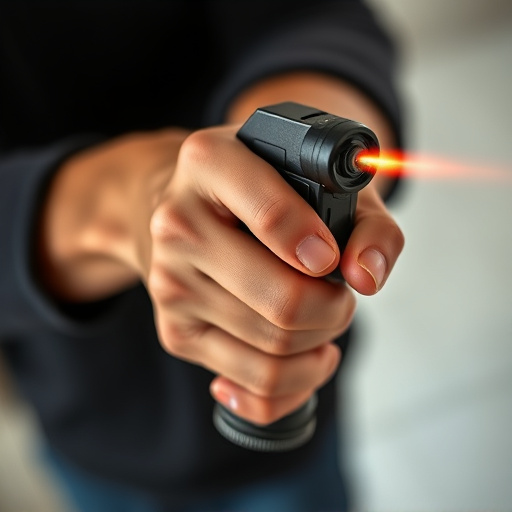Understanding Pepper Spray Laws by State is essential for citizens seeking self-defense options, offering a comprehensive view of regulations across diverse U.S. states. This guide navigates the spectrum from permissive to stringent laws, helping individuals make informed decisions about pepper spray ownership and usage while emphasizing responsible exercise of rights in today's digital age. Law enforcement must also strictly adhere to safety protocols, including training, de-escalation strategies, protective gear, and equipment maintenance when deploying pepper spray as a last resort for self-defense.
“Uncover the power and complexity of inflammatory riot control spray dispensers, a critical tool in law enforcement. This comprehensive guide delves into ‘Understanding Pepper Spray’, exploring its active ingredients and effects. We navigate ‘Pepper Spray Laws by State’, dissecting the regulatory landscape and ensuring officers operate within legal boundaries. The article also highlights various riot control spray types, their unique applications, and essential safety measures for effective, responsible use. Essential reading for anyone seeking insight into this game-changing technology.”
- Understanding Pepper Spray: A Comprehensive Overview
- Legal Framework: Pepper Spray Regulations by State
- Riot Control Sprays: Types and Their Applications
- Safety Measures and Best Practices for Law Enforcement Use
Understanding Pepper Spray: A Comprehensive Overview
Legal Framework: Pepper Spray Regulations by State
Riot Control Sprays: Types and Their Applications
Safety Measures and Best Practices for Law Enforcement Use
When employing inflammatory riot control spray, law enforcement agencies and officers must adhere to stringent safety protocols to ensure both public and personal security. Pepper spray, also known as oleoresin capsicum (OC) spray, is a powerful tool for crowd control but its use comes with significant risks if not handled properly. Officers should receive comprehensive training on the correct application techniques, including target areas, distance, and duration of spray deployment. Familiarity with local pepper spray laws by state is paramount to avoid legal repercussions.
Best practices emphasize de-escalation as a primary strategy. Law enforcement should only resort to pepper spray when necessary for self-defense or to protect others from imminent harm. Officers must be equipped with proper protective gear, including eye and face protection, resistant clothing, and respirators, to minimize exposure to the spray. Additionally, regular maintenance and inspection of equipment ensure reliability and functionality during critical situations. Clear communication protocols should be established among officers to coordinate responses and mitigate potential risks associated with pepper spray use.
In conclusion, pepper spray has evolved from a tool of last resort to a vital component in riot control strategies, with its effectiveness underscored by its widespread adoption globally. However, as with any powerful tool, responsible and lawful use is paramount. Understanding the legal framework, including Pepper Spray Laws by State, ensures that law enforcement agencies can deploy this technology safely and effectively while adhering to their jurisdiction’s regulations. By following best practices and safety measures, they can maintain public order without causing undue harm.
